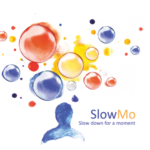
Psychotic disorders like schizophrenia can be distressing and impairing (Schizophrenia Commission, 2012). Psychological treatment such as cognitive behavioural therapy (CBT), combined with medication in some cases, is the first line approach to treatment (NICE, 2014). However, these treatments don’t work for everyone and only a minority gain access to them (Schizophrenia Commission, 2012), making alternative approaches attractive to many people.
There has been a lot of interest in how digital technologies like smartphones can be used to treat and support people with mental health conditions like psychosis (Rus-Calafell & Schneider, 2020; Chivilgina et al., 2020). Because most people carry a smartphone with them most of the time, delivering treatments through apps might provide access to support in the moment it’s needed. Using technologies like smartphone apps in conjunction with standard treatment like CBT is called blended therapy (Wentzel et al., 2016), and offers a way to bridge the gap between the therapy room and everyday life by providing continuous access to support.
Research has shown that differences in the way people experiencing psychosis think are one of the major drivers behind symptoms like paranoia (Garety et al., 2005). Paranoia is a fear of deliberate harm from others, which can be frightening and make everyday life challenging. Research has shown that having rigid beliefs that are difficult to shift, as well as jumping to conclusions about the meaning of events, are types of reasoning biases underpinning paranoia (Ward et al., 2019). This means that treatments aiming to slow thinking down to allow for more flexible and balanced beliefs may help reduce paranoia.
The idea behind this study was to test whether a smartphone app called SlowMo could be used to support CBT treatment for people experiencing paranoia. The app was designed to help people with paranoia slow down their thinking and correct interpretation biases. The main hypothesis was that using SlowMo would improve paranoia and that these effects would be mediated by reductions in thinking biases.

The authors of this paper state that “This randomized clinical trial aimed to test the efficacy of SlowMo in reducing paranoia and improving reasoning.”
Methods
The design of the study was a randomised controlled trial in which 362 participants were randomised to receive either SlowMo alongside eight sessions of CBT over 12 weeks, or treatment-as-usual.
Participants were adults with a confirmed diagnosis of schizophrenia and difficulties with paranoia, recruited through community mental health services in the UK. The trial was pre-registered and a protocol was published prior to data collection finishing (Garety et al., 2017).
Measures capturing changes in paranoia, psychotic symptoms, thinking processes and secondary outcomes such as quality of life were selected by the researchers and a lived experience reference group. These measures were completed at baseline, after the intervention period of 12 weeks, and a follow up at 24 weeks, and were administered by a researcher blind to what group the participants were allocated to.
SlowMo is a digital intervention designed to integrate with eight individual CBT sessions. Using interactive features including information, animated vignettes, games, and personalised thought bubbles, a web platform and mobile app was used within therapy sessions and in daily life to build awareness of, and slow down, unhelpful fast thinking patterns using CBT based techniques. The app was designed by researchers at King’s College London using a participatory design process alongside people with experiences of paranoia (Hardy et al., 2018).
All participants were given an Android app for the trial, and the CBT sessions were delivered at a clinic or in the home.
Results
Immediately after using SlowMo, participants had lower scores on the primary outcome of paranoia compared to those that received treatment-as-usual, however these differences were small (cohen’s d = 0.30) and were not maintained at 24 weeks follow up, which was the primary end point for the study. The reductions in paranoia were mediated by improvements in belief flexibility and worry at both timepoints.
Larger effects in the moderate range were observed for secondary measures that were rated by a researcher, including overall psychotic symptoms (cohen’s d = 0.47), distress (cohen’s d = 0.50) and persecutory delusions (cohen’s d = 0.43), which were maintained at 24 weeks. There were also small improvements in wellbeing, quality of life, worry and views of the self (cohen’s d range = 0.17 to 0.32).
Belief flexibility improved at both timepoints, but alternative explanations for beliefs and jumping to conclusions did not. Fast thinking improved at both timepoints, but slow thinking only improved at 24 weeks.
Clinical or demographic variables did not moderate the treatment effects and there was no evidence that the intervention was harmful.

There were small improvements in paranoia and moderate improvements in psychotic symptoms after the SlowMo intervention.
Conclusions
- The SlowMo intervention resulted in small reductions in paranoia that were partly attributed to improvements in thinking biases, but these effects did not remain over time
- Secondary outcomes were more promising, suggesting the intervention had a stronger impact on delusional experiences more generally
- Modifying worry and belief flexibility were important mechanisms of change in this intervention, however jumping to conclusions was not.

Belief flexibility and worry are important targets in psychological treatment for paranoia.
Strengths and limitations
This was a very well designed and executed study by a leading research group who have spent decades working to understand the mechanisms and treatment of paranoia.
Key strengths are:
- A randomised controlled trial design with pre-registration controls for a number of important biases that could account for the results
- A large and representative sample provides confidence in the generalisability of the findings
- A user-centred design approach to app development meant the intervention was highly acceptable and fit for purpose; a common failing of many digital interventions developed by researchers (Mohr et al., 2017)
- A focus on mechanisms helps explain how and why the intervention works, opening up opportunities to improve it in future
- Involving a lived experience reference group added a lot of weight to these findings and helped steer the research to use meaningful outcomes to measure the effect of the intervention.
There were few limitations with this study, however notable issues were:
- There were a number of occasions in which the researchers conducting the assessments were unblinded, which meant they became aware of whether the participant received SlowMo or not. Whilst this is not uncommon nor a failing of the researchers, typically repeating the assessment with a blind researcher is more favourable than using unblind ratings. This avoids biasing the outcome ratings to benefit the SlowMo intervention group.
- The authors use a pre-defined adherence measure to assess engagement, which was use of the app home screen at least once following a therapy session after the third session. This is a very low bar for engagement and it begs the question of how much ‘exposure’ the participants had to the app outside of therapy.
- There was overall very little information about experiences with the app in this study. Perhaps negative experiences with the app could account for the small effects? It is typical to include a satisfaction questionnaire and more detailed descriptions of app engagement in digital intervention trials, though this may be planned for another publication or be due to journal word limits. I was left wanting to know a lot more about how the app was used and experiences of clinicians and participants.

This is a very well-designed study with a strong focus on intervention mechanisms.
Implications for practice
This is one of the largest clinical trials of a blended digital intervention for psychotic experiences. The positive effects of the intervention with no evidence of harm suggests that using digital tools like this with people experiencing psychosis is safe and potentially effective.
Should SlowMo become available to use in future, clinicians should have confidence that the app can be used successfully and without harm to support their treatment, and explore the option of using it with their clients. As always, an individualised approach to determining what works for the individual is preferred, rather than assuming that the same thing will work for everyone.
One of the main issues facing clinical practice is the lack of digital tools available on the market for clinicians and people experiencing psychosis to use. Available digital tools are rarely evidence-based like SlowMo and are typically developed by commercial companies for profit, resulting in questionable ethical practices (Parker et al., 2019). Developing accessible, evidence-based digital tools for the marketplace is a top priority and requires partnership with industry and researchers.
Clinicians and people seeking apps to support their mental health should use tools like the American Psychiatric Association app evaluation model to review and select appropriate digital tools (APA, 2021).

Developing accessible, evidence-based digital tools is a major priority for people working in mental health.
Statement of interests
None to disclose.
Links
Primary paper
Garety, P., Ward, T., Emsley, R., Greenwood, K., Freeman, D., Fowler, D., … & Hardy, A. (2021). Effects of SlowMo, a Blended Digital Therapy Targeting Reasoning, on Paranoia Among People With Psychosis: A Randomized Clinical Trial. JAMA Psychiatry.
Other references
APA (2021). The App Evaluation Model
Chivilgina, O., Wangmo, T., Elger, B. S., Heinrich, T., & Jotterand, F. (2020). mHealth for schizophrenia spectrum disorders management: A systematic review. International Journal of Social Psychiatry, 66(7), 642-665.
Garety PA, Freeman D, Jolley S, et al. Reasoning, emotions, and delusional conviction in psychosis. J Abnorm Psychol. 2005;114(3):373-384.
Garety, P. A., Ward, T., Freeman, D., Fowler, D., Emsley, R., Dunn, G., … & Hardy, A. (2017). SlowMo, a digital therapy targeting reasoning in paranoia, versus treatment as usual in the treatment of people who fear harm from others: study protocol for a randomised controlled trial. Trials, 18(1), 1-13.
Hardy A, Wojdecka A, West J, et al. How inclusive, user-centered design research can improve psychological therapies for psychosis: development of SlowMo. JMIR Ment Health. 2018;5(4):e11222. doi:10.2196/11222
Mohr, D. C., Weingardt, K. R., Reddy, M., & Schueller, S. M. (2017). Three problems with current digital mental health research… and three things we can do about them. Psychiatric services, 68(5), 427-429.
National Institute for Health and Care Excellence (NICE). (2014). Psychosis and schizophrenia in adults: Prevention and management (Clinical guideline 178). NICE.
Parker, L., Halter, V., Karliychuk, T., & Grundy, Q. (2019). How private is your mental health app data? An empirical study of mental health app privacy policies and practices. International journal of law and psychiatry, 64, 198-204.
Rus-Calafell, M., & Schneider, S. (2020). Are we there yet?!—a literature review of recent digital technology advances for the treatment of early psychosis. Mhealth, 6.
Schizophrenia Commission. The Abandoned Illness: A Report From the Schizophrenia Commission. Rethink Mental Illness; November 2012.
Ward T, Garety PA. Fast and slow thinking in distressing delusions: a review of the literature and implications for targeted therapy. Schizophr Res. 2019;203:80-87. doi:10.1016/j.schres.2017.08.045
Wentzel, J., van der Vaart, R., Bohlmeijer, E. T., & van Gemert-Pijnen, J. E. (2016). Mixing online and face-to-face therapy: how to benefit from blended care in mental health care. JMIR mental health, 3(1), e9.
Photo credits
- Photo by Mia Baker on Unsplash
- Photo by Jungwoo Hong on Unsplash
- Photo by Ricardo Arce on Unsplash
- Photo by Shane Aldendorff on Unsplash
- Photo by Danka & Peter on Unsplash
